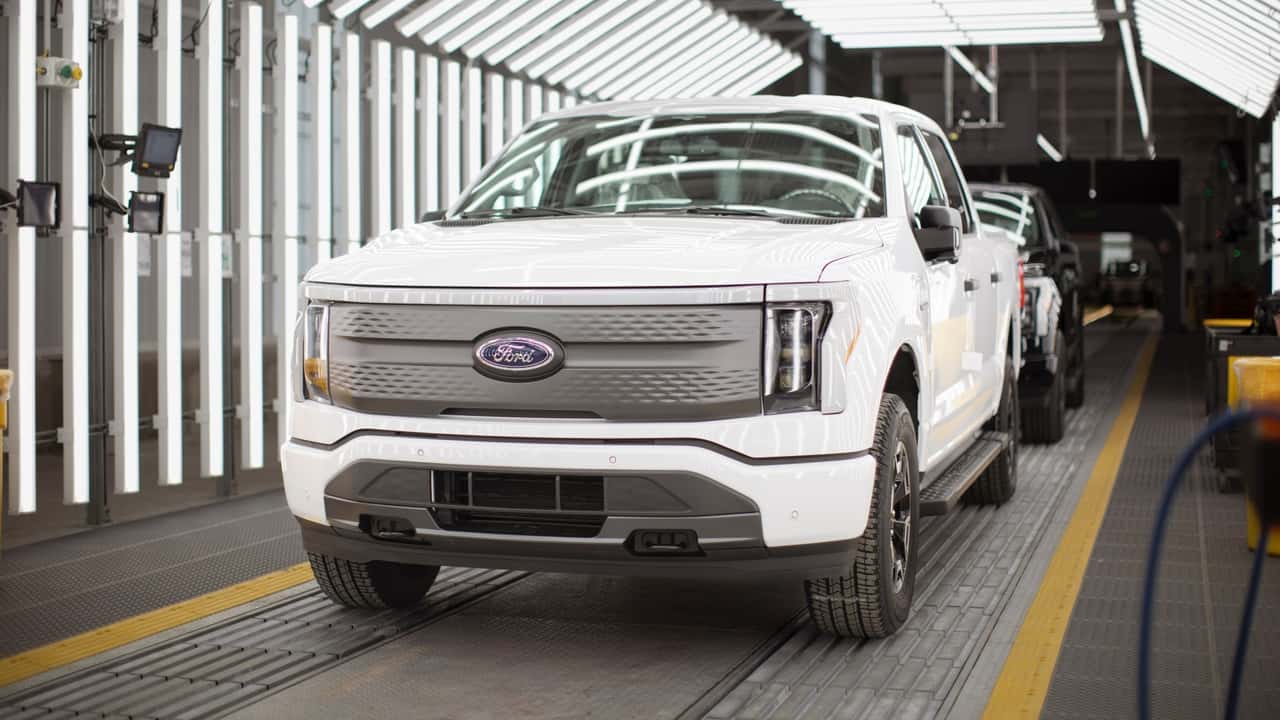The EPA has faced some criticism from climate activists for relaxing its emissions rules as automakers claimed that targets it set were physically impossible. Now, the NHTSA has also relaxed its MPG fleet goals to dovetail with the EPA’s relaxed requirements. For the 2031 model year, all light-duty trucks and cars must meet a CAFE fleet average of 50.4 mpg.
Despite that sky-high number, this is down from the NHTSA’s original proposal of a 55.7 MPG average by the 2032 model year. With these relaxed years, new cars need to improve by 2% each year between 2027 and 2031, while light trucks only need a 2% improvement from 2029 to 2031. Under the old proposal, cars would need to improve 2% per year from 2027 to 2032, while light trucks would need to come up 4% per year from 2027 to 2032.
Get Fully Charged
CAFE is binding
Corporate Average Fuel Economy standards, commonly referred to as “CAFE” is an average of a manufacturer’s model line meant to continually increase over time. Introduced in 1978, these fleet-wide averages must be achieved by every automaker, otherwise they face strict fines.
Reactions to the proposal have been mixed. Some, like the Alliance for Automotive Innovation, have praised the administration for incentivizing more fuel-efficient vehicles while creating a policy that they claim is more realistic and achievable. Others have slammed the Biden administration for officially relaxing the rules and, therefore, allowing automakers to continue to make gas-powered, gas-guzzling trucks and cars.
It’s still not quite clear what will happen next, though. The Biden Administration pushed back on criticism, insisting these new rules would allow automakers to craft and sell more efficient electric vehicles rather than focusing on gas-powered vehicles.
It’s kind of a six-in-one-hand, half-dozen-in-the-other conundrum when it comes to these new rules. On the one hand, 50.4 MPG is a pretty lofty number, no doubt buoyed by the sales of EVs and other PHEV models. On the other hand, it allows the big trucks and SUVs that we love so much here in the US to continue with relatively small economic improvements. It could also slow the adoption of EVs since the sales of EVs would offset the MPG average of any gasoline-powered car. The administration only targets EVs to make 30-56% of all vehicle sales between 2030 and 2032, way down from the 67% by 2032 made initially.
But, of the same token, the NHTSA can’t calculate EVs for its fuel economy averages. Many automakers claimed that reaching the original goals was completely impossible, and they’d face billions in fines.
The new rules claim that the U.S. will save 70 billion gallons of gasoline and more than 710 million metric tons of carbon dioxide through 2050. This is down from the original policy’s goals of 90 billion gallons of gas, and more than 900 million tons of carbon dioxide.
Still, these goals are somewhat of an imperfect win for the environment and transitioning away from fossil fuels. But, let’s hope and pray they don’t get eroded any further.
The National Highway Traffic Safety Administration (NHTSA) has recently announced that it will be relaxing the Corporate Average Fuel Economy (CAFE) standards for automakers in the United States. This decision comes as part of a broader effort to provide some relief to the automotive industry, which has been facing increasing challenges in meeting the stringent fuel efficiency requirements set by the previous administration.
Under the new rules, automakers will be required to achieve an average fuel economy of 50.4 miles per gallon (mpg) by the year 2031. This represents a significant reduction from the previous goal of 54.5 mpg that was set to be achieved by 2025. The NHTSA has justified this decision by arguing that the 54.5 mpg target was overly ambitious and would have placed undue burden on automakers, leading to higher vehicle prices and potentially reduced consumer choice.
By relaxing the CAFE rules, the NHTSA hopes to strike a balance between promoting fuel efficiency and ensuring the continued viability of the automotive industry. The agency has stated that the revised standards will still lead to significant improvements in fuel economy over the next decade, ultimately reducing greenhouse gas emissions and dependence on foreign oil.
However, the decision has not been without its critics. Environmental groups and some lawmakers have raised concerns that lowering the fuel economy targets will hinder efforts to combat climate change and air pollution. They argue that the new standards do not go far enough in promoting cleaner, more efficient vehicles and could undermine the progress that has been made in recent years.
In response to these criticisms, the NHTSA has emphasized that the revised CAFE rules are a pragmatic approach that takes into account the current economic and technological realities facing the automotive industry. The agency has also pointed out that the standards can be revisited and adjusted in the future as needed to ensure that they remain effective in promoting fuel efficiency and reducing emissions.
Overall, the decision to relax the CAFE rules and set a target of 50.4 mpg by 2031 represents a significant shift in the federal government’s approach to regulating fuel economy. While it has been welcomed by automakers as a necessary adjustment to the regulatory landscape, it has also generated debate and pushback from environmental advocates and other stakeholders. As the automotive industry continues to evolve in the coming years, the debate over fuel economy standards is likely to remain a contentious issue with far-reaching implications for both the environment and the economy.

